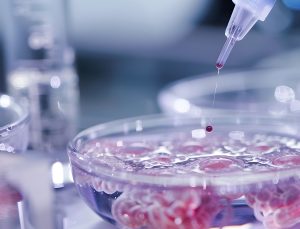In a significant medical breakthrough, a German man may have been cured of HIV following a stem cell transplant to treat Acute Myeloid Leukemia (AML). This marks only the seventh documented case of such a cure since the AIDS epidemic began over four decades ago.
The patient, who wishes to remain anonymous, underwent a stem cell transplant in October 2015 and ceased taking antiretroviral drugs in September 2018.
Remarkably, he has since remained in viral remission, with multiple ultra-sensitive tests failing to detect any viable HIV in his body.
LEADING EXPERTS CAUTIOUS OF STEM CELL TRANSPLANT SIDE EFFECTS
Dr. Christian Gaebler, a physician-scientist at Charité-Universitätsmedizin, Berlin, expressed cautious optimism. He believes that prolonged HIV remission without treatment indicates a potential eradication of the virus.
The treatment, however, is not widely applicable due to stem cell transplant side effects. The highly toxic and fatal nature of stem cells makes them an ethical option only for those patients who need to treat severe conditions like blood cancer.
The German man’s donor was selected because his immune cells possessed a rare, natural resistance to HIV. This resistance stems from a genetic mutation affecting the CCR5 protein, which most HIV strains use to infect cells.
STEM CELL TRANSPLANT CAN EXPAND THE POSSIBILITIES OF CURE

Dr. Sharon Lewin, Director of the Peter Doherty Institute for Infection and Immunity, Melbourne, emphasized the significance of CCR5 mutation. She said – broadening the donor pool with this mutation could increase the number of successful treatments.
Interestingly, another case involved a man in Geneva who was cured of HIV through a stem cell transplant, even though the donor lacked the CCR5 mutation.
This case is significant because it challenges the prevailing understanding that the CCR5 mutation is essential for achieving an HIV cure. It opens up new avenues of research to explore other genetic or immunological factors that may contribute to eradicating the virus.
Dr. Steven Deeks, a leading HIV cure researcher at the University of California, San Francisco, alluded to several testable theories, optimistic about learning something more from this case that could shape the next generation of cure studies for HIV.
BUILDING ON PAST SUCCESSES
This latest case of the German man joins the ranks of six other known instances of HIV cure. One of them was Timothy Ray Brown, known as the “Berlin patient,” the first person cured of HIV in 2008. And another was Adam Castillejo, the “London patient,” who was cured in 2016.
Other notable cases include – Marc Franke, the “Düsseldorf patient,” and Paul Edmonds, the “City of Hope patient.” They received stem cell transplants for AML and are considered cured.
Despite these successes, experts caution that stem cell transplantation is not a feasible solution for the vast majority of people living with HIV. These cases provide valuable insights that could help researchers develop better and more widely applicable treatments.
The ultimate goal remains the same – a world where HIV is no longer a life sentence but a condition that can be effectively cured.
As research on stem cell transplants continues, the stories of those like “the German man” and the other cured individuals offer hope and inspiration. They remind us of the remarkable progress being made in the fight against HIV/AIDS.
Do you have a story to share about new medical breakthroughs or research?
Write to us at collaboration@mdforlives.com.
You can also register with us and earn passive income by taking paid medical surveys.
REFERENCES:
A 7th person with HIV is probably cured after stem cell transplant for leukemia, scientists say
www.nbcnews.com
A. Royden D’Souza is a professional writer with over 5 years of experience in the healthcare industry. He holds an engineering degree and has worked with several brands to meet their content requirements. He is passionate about writing engaging content for healthcare professionals, allied healthcare professionals, and nurses.






